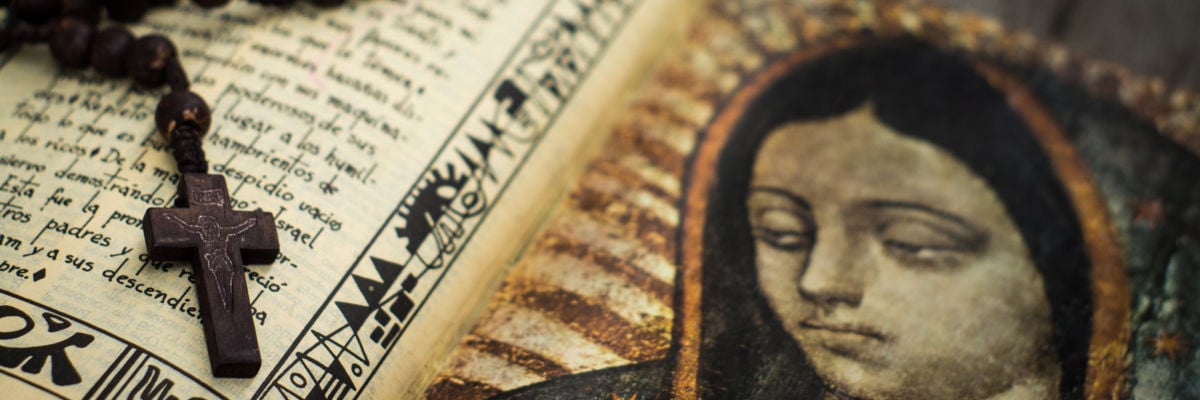
DAY 68
CHALLENGE
“If praying to Mary is good, why don’t we see it in the New Testament?”
DEFENSE
We would not expect to.
Not every teaching has to be present in Scripture (see Day 5), and not every practice consistent with Christian liberty has to be documented in the New Testament. It took time for Christians to work out the implications of the deposit of faith Jesus gave the apostles.
Scripture shows an awareness that we can pray for the dead (2 Macc. 12:42 and, quite possibly, 2 Tim. 1:18) and an awareness that those in heaven intercede for the living (2 Macc. 15:12, 14; Matt. 18:10; Rev. 5:8, 8:3–4). It was not long before Christians took the natural step of asking those in heaven to pray for them (see Jimmy Akin, The Fathers Know Best, chapter 52).
Whether this practice was already in use in the first century, we do not know, but if it was, we still would not expect to see references to Marian prayers in the New Testament. Its documents are not private devotionals and are not the type of literature we would expect to contain such references. The Gospels are set during the life of Christ, when Mary was clearly still alive, and Revelation is a prophetic work that records almost nothing of John’s life outside the vision.
We do find references to personal prayer in Acts and the epistles, but there is a good reason they, too, wouldn’t include Marian prayers: Mary was probably still alive. According to the Protoevangelium of James (chapters 8–9), Mary was betrothed to Joseph when she was twelve. This was a common age for girls to be married (boys typically married in their teens). The Talmud describes the onset of puberty as the preferred time for a daughter to be married (b. Sanhedrin 76a-b).
If Mary was thirteen when Jesus was born, then, based on the traditional date of his birth in 3–2 B.C., Mary would have been born around 15 B.C. She would be seventy in A.D. 55 and eighty in 65. Acts was written in A.D. 60, and the New Testament epistles were written between the late 40s and the mid-60s. It is thus quite possible that Mary had not reached the end of her earthly life.



